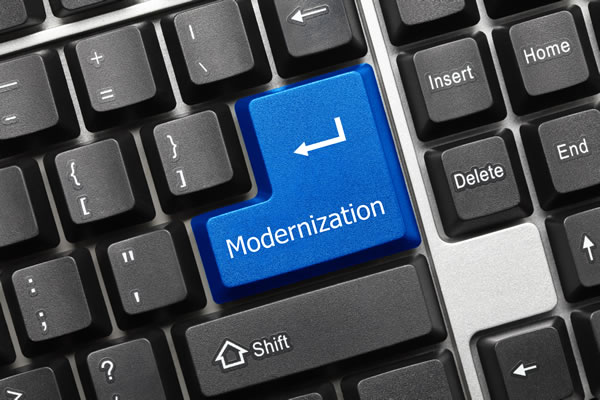As the pandemic rages on, financial institutions have been forced to shift a majority of their services to an online format, placing significant pressure on their outdated systems to keep up with changing business demands. However, without the ability to adapt their services at scale, financial institutions risk system outages – which can result in customer dissatisfaction and losing out on key revenue streams to their competitors. With this in mind, financial institutions are left wondering how to better protect themselves, their essential services and their customers – and the solution is through modernizing to the cloud.
Disruption is here
Disruption in the IT space continues to evolve – and whether caused by a pandemic or aging technology, financial institutions need agile systems that can adapt in real-time. While there is no one size fits all approach to modernization, many financial organizations stick to their existing systems and delay their transformations entirely – which means these issues are bound to come to light once again.
Many financial institutions are hesitant to ditch their archaic mainframes because they have viewed the task as too risky, costly and time consuming to justify immediate action. In addition, companies tend to fear the rip and replace modernization approach – also known as “rearchitecting” or “re-engineering” – because of the potential for lost business intelligence, downtime for customers and the steep price tags that come with it. That said, the irony of this approach is that the longer companies wait to modernize and move to the cloud, the more costly and difficult it becomes to maintain their mainframe. Luckily, there are a variety of low-risk modernization strategies that can keep these systems fully intact without breaking the bank:
Alternative #3 – Replicating data:
Data replication is an alternative that allows organizations to keep their legacy systems fully intact while still freeing their essential data from the mainframe. Companies can replicate the mainframe and non-relational data through an entirely new, relational model, allowing the existing system to continue with its standard functions while automatically copying and converting data to create a replica of the legacy database on the new model suitable for today’s business demands. This strategy offers greater visibility and flexibility for businesses throughout their shift to the cloud.
For Companies House, the United Kingdom’s registrar of companies that records and stores information on 1.8 million organizations, this kind of approach was key. Downtime was not an option as the public relies on access to its data in real time. The company was able to create faster service for its consumers and reduce costs for the organization through replicating its data onto a relational model. This was because they were now able to seamlessly integrate code into its target database and more easily manage daily updates to data.
Alternative #2 – Moving batch processes off of the mainframe:
If a business has limited IT budget and resources, “batch offloading” may be the best approach – and is typically an easy first step within a broader modernization effort. Through this process, organizations can convert one or more batch process applications to modern programming languages such as Java and C# – and by moving applications off of the mainframe – can future-proof their processes, generate greater flexibility, and reduce overall IT costs. This can have a positive impact on the consumer as well because when they get to utilize user-friendly upgrades without a break in service, causing satisfaction rates to go up, ultimately providing these organizations with a greater competitive edge.
New York City’s Metropolitan Transportation Authority (MTA) is a good example of the batch offloading approach, as they were able to continue without any interruption or significant changes to their mainframe’s processes for users when they wanted to create a foundation for refreshed, cost-effective platforms. Through this process they also reduced costs from maintaining their legacy system and prepared for the next steps in their broader modernization strategy for the organization as a whole.
Alternative #1 – Automated refactoring:
Running mission-critical applications and processes on legacy systems can greatly reduce the ability to meet the demands of today’s business processes. Automated refactoring can be the best approach as companies in the financial industry seek new ways to reduce costs and enable data and business process integration.
BBVA – Spain’s second largest bank – is a great example of leveraging automated refactoring. It was able to refactor its code while taking total technical inventory, identifying key risk factors in its mainframe, and removing significant amounts of dead code and approximately 38% of its unused programs. It reduced licensing costs of its mainframe and enhanced its features, simultaneously freeing data trapped within its legacy system to better enable global operations in a fraction of the time a re-engineering effort would have taken. After reducing the cost of its mainframe operations, the company was also able to drive positive ROI of their transformation strategy within just two years’ time.
Staying Ahead of the Curve
Financial institutions need to choose the right path for themselves when it comes to modernization in order to stay relevant in the post COVID-19 world. These types of modernization projects can help companies become more agile, and since most modernization partnerships are done remotely, can be completed safely during the WFH era. Modernization can be completely tailored to an organization’s needs and better prepare any organization for the future.
















